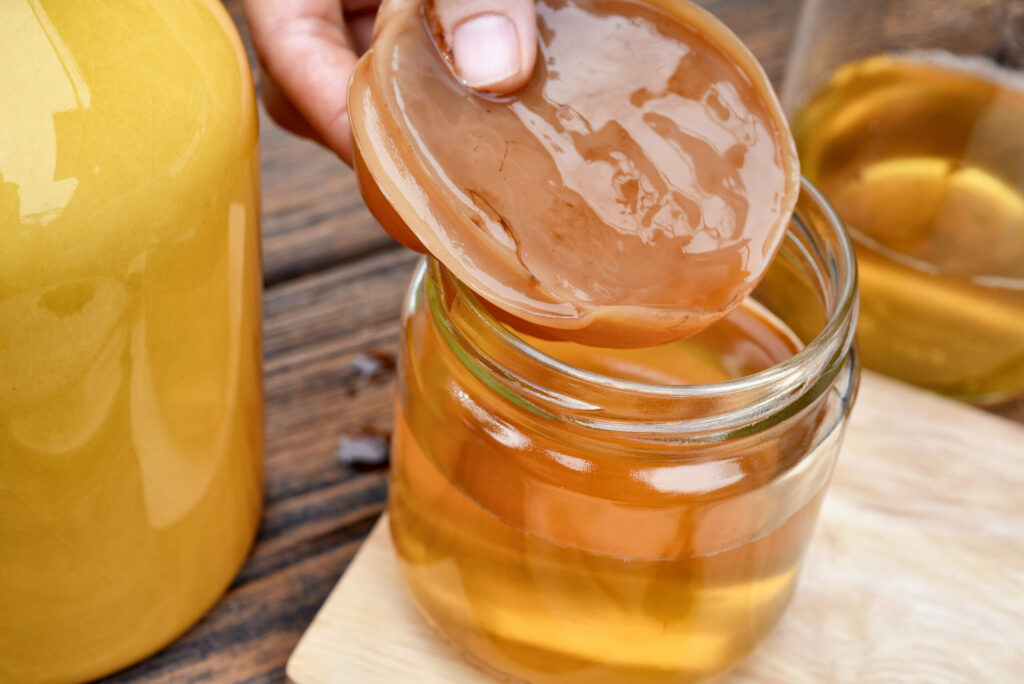Introduction
Kombucha has gained significant popularity in recent years due to its numerous health benefits and unique taste. It is a fermented beverage made from sweetened tea that is often consumed for its probiotic properties. At the heart of the kombucha brewing process lies a key ingredient known as the SCOBY. In this comprehensive guide, we will explore what a SCOBY is, its role in kombucha fermentation, and how you can make your own SCOBY at home.
Section 1: Understanding SCOBY
1.1 What is a SCOBY?
SCOBY stands for Symbiotic Culture of Bacteria and Yeast. It is a rubbery, pancake-shaped disc that floats on the surface of the kombucha tea during the fermentation process. The SCOBY is a living organism composed of various strains of beneficial bacteria and yeast that work together symbiotically to ferment the sweetened tea into kombucha.
1.2 The Role of SCOBY in Kombucha Fermentation
The SCOBY plays a crucial role in the fermentation process of kombucha. As the sweetened tea is left to ferment, the bacteria and yeast present in the SCOBY consume the sugars and convert them into organic acids, vitamins, and other beneficial compounds. The SCOBY also acts as a protective barrier, preventing harmful bacteria from contaminating the fermenting tea.
Section 2: Making a SCOBY
2.1 Obtaining a SCOBY
There are several ways to obtain a SCOBY. One option is to purchase a SCOBY from a reputable source or obtain it from a friend who is already brewing kombucha. Another option is to make your own SCOBY, which can be an exciting and rewarding process.
2.2 Making a SCOBY from Scratch
To make a SCOBY from scratch, you will need the following ingredients and equipment:
- 2 cups of brewed black or green tea (sweetened with 1/4 cup of sugar)
- 1 cup of unflavored, unpasteurized store-bought kombucha
- A glass jar or container
- A breathable cover (such as a coffee filter or cheesecloth)
- A rubber band
Here’s a step-by-step guide to making a SCOBY:
- Brew two cups of black or green tea and dissolve 1/4 cup of sugar in it. Allow the tea to cool completely.
- Pour the cooled sweetened tea into a glass jar or container.
- Add 1 cup of unflavored, unpasteurized store-bought kombucha to the jar.
- Cover the jar with a breathable cover and secure it with a rubber band.
- Place the jar in a warm, well-ventilated area away from direct sunlight.
- Allow the mixture to ferment for about 1-4 weeks. During this time, a new SCOBY will start to form on the surface of the liquid.
- Once the SCOBY reaches a thickness of about 1/4 to 1/2 inch, it is ready to be used for brewing kombucha.
Section 3: Caring for Your SCOBY
3.1 Storing the SCOBY
If you are not planning to use your SCOBY immediately, you can store it in a SCOBY hotel. A SCOBY hotel is a jar filled with a small amount of brewed kombucha and multiple SCOBYs. Ensure that the SCOBY is fully submerged in the liquid and cover the jar with a breathable cover. Keep the SCOBY hotel in a cool, dark place until you are ready to use it.
3.2 Maintaining Your SCOBY
To keep your SCOBY healthy and active, it is essential to provide it with the right environment. Here are a few tips for maintaining your SCOBY:
- Keep your SCOBY in a glass container and avoid using metal or plastic, as these materials can react with the acidic nature of kombucha.
- Use only clean, non-chlorinated water and quality tea for brewing kombucha.
- Avoid exposing your SCOBY to extreme temperatures or direct sunlight.
- Regularly remove any browned or damaged layers from the SCOBY.
- Section 4: Troubleshooting SCOBY Issues
4.1 Mold Growth
Mold growth on a SCOBY is a common issue that can occur due to contamination or improper brewing conditions. If you notice mold on your SCOBY, it is crucial to discard the entire batch of kombucha and start fresh with a new SCOBY to prevent any potential health risks.
4.2 pH Imbalance
An imbalanced pH level in your kombucha can affect the health of your SCOBY. The optimal pH range for kombucha brewing is between 2.5 and 4.2. If you suspect a pH imbalance, you can use pH testing strips to measure the acidity level and adjust it by adding small amounts of brewed tea or vinegar.
Conclusion
The SCOBY is a vital component of the kombucha brewing process, responsible for the fermentation and flavor development of the beverage. Making your own SCOBY can be an exciting and rewarding experience, allowing you to have full control over the quality of your kombucha. By understanding how to care for your SCOBY and troubleshoot any issues that may arise, you can ensure a successful and enjoyable kombucha brewing journey. Cheers to homemade kombucha and a healthy SCOBY!

